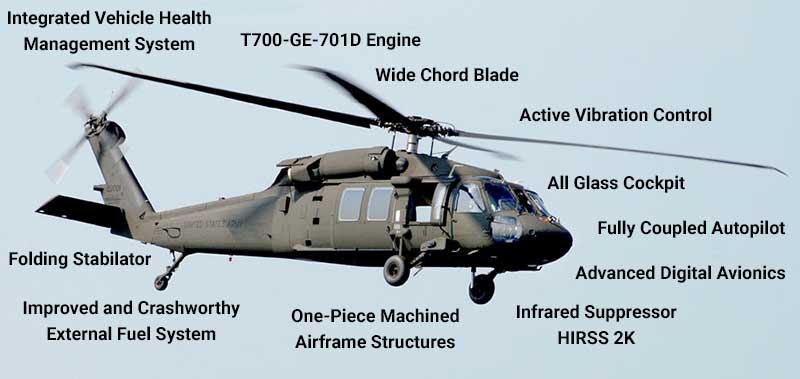Flying High: UH 60 Helicopter Safety Protocols You Have To Know
Flying High: UH 60 Helicopter Safety Protocols You Have To Know
Blog Article
Browsing Uh 60 Helicopter Regulations and Conformity Needs

Regulatory Framework Summary
The regulatory framework controling UH-60 helicopter procedures includes a complicated set of criteria and regulations developed by aviation authorities. These policies are made to make sure the risk-free and efficient operation of UH-60 helicopters in numerous atmospheres. The Federal Aeronautics Management (FAA) plays a main function in establishing and applying these guidelines, which cover a large range of functional elements, including airworthiness criteria, pilot certifications, maintenance needs, and operational treatments.
Compliance with these regulations is important for helicopter drivers to preserve the highest degree of security and functional stability. Failing to comply with these regulations can lead to significant effects, consisting of accidents, injuries, and regulative sanctions. Consequently, helicopter operators have to stay educated about the most recent regulative growths and make sure that their procedures are in complete compliance with all appropriate regulations and requirements.
Airworthiness Evaluations and instructions
Among the governing structure governing UH-60 helicopter operations, a crucial focus pushes conformity with Airworthiness Directives and performing thorough inspections to support safety standards and operational reliability. Airworthiness Directives (ADs) are issued by aeronautics authorities to address hazardous conditions in aircraft, consisting of the UH-60 helicopter, and required details activities to be taken by drivers or owners. Conformity with Advertisements is required, and failing to follow these regulations can result in significant effects, consisting of grounding of the aircraft.
Normal evaluations are paramount to making sure the airworthiness of UH-60 helicopters. By adhering to a stringent inspection program, drivers can discover and resolve prospective concerns promptly, consequently boosting the security and reliability of UH-60 helicopter procedures.
Pilot Qualifications and Training

Pilot training for UH-60 helicopters is extensive and covers a vast variety of topics, consisting of aircraft systems, emergency situation procedures, navigating, and mission-specific training. Additionally, pilots go through simulator training to practice numerous emergency circumstances in a controlled setting. This training helps pilots create the required abilities to handle difficult situations successfully.


Moreover, recurring training and expert advancement are essential for UH-60 pilots to remain existing with the most recent guidelines, innovation, and finest practices. By spending in pilot credentials and training, operators can improve safety, optimize efficiency, and make sure compliance with regulatory needs in the operation of UH-60 helicopters.
Operational Limitations and Needs
Pilot certifications and training serve as the structure redirected here for recognizing the operational limitations and needs related to UH-60 helicopter operations (uh 60). These functional limitations are implemented to guarantee the safety of the team, passengers, and the airplane itself. Operational constraints might include variables such as weather, weight limitations, altitude restrictions, and operational limits. It is essential for pilots to be fluent in these limitations to make enlightened decisions throughout flight procedures. Additionally, conformity requirements, such as adhering to details flight courses, communication procedures, and emergency procedures, are essential for preserving functional security and governing compliance. Pilots need to remain current with all operational constraints and requirements with normal training, briefings, recommended you read and examines to mitigate dangers and make certain safe and effective UH-60 helicopter operations. By prioritizing adherence to these functional standards, pilots can enhance the overall security and performance of their missions while maintaining governing criteria.
Emergency Treatments and Compliance Testing
Effective emergency treatments and thorough conformity screening are important elements of preserving operational safety and regulatory adherence in UH-60 helicopter procedures. Emergency situation treatments include protocols for various circumstances, consisting of engine failures, fires, hydraulic issues, and extra. Pilots and staff members should be well-versed in these treatments to respond swiftly and effectively in emergency situations. Routine compliance screening makes sure that the helicopter satisfies all regulatory needs set forth by aviation authorities. This screening includes comprehensive evaluations, checks, and examinations to verify that the airplane is airworthy and in conformity with all applicable laws.
Additionally, conformity testing might entail simulations of emergency situation scenarios to evaluate the team's action and the helicopter's efficiency under stress and anxiety. By prioritizing emergency procedures and compliance testing, UH-60 operators can alleviate threats and demonstrate their dedication Learn More Here to security and regulative compliance.
Conclusion
To conclude, adherence to governing framework, compliance with airworthiness directives, pilot credentials and training, operational limitations, and emergency treatments are crucial for navigating the laws and needs of running a UH-60 helicopter. uh 60. It is crucial for operators to focus on safety and ensure complete conformity with all relevant laws to keep the airworthiness and operational stability of the aircraft
Browsing the governing landscape bordering UH-60 helicopter operations demands a nuanced understanding of the intricate web of rules and conformity demands.Compliance with these regulations is important for helicopter drivers to keep the greatest levels of safety and functional stability.Amidst the governing structure regulating UH-60 helicopter operations, a critical emphasis lies on compliance with Airworthiness Directives and performing complete assessments to support safety and security requirements and operational integrity.Efficient emergency treatments and extensive compliance screening are vital components of preserving operational safety and security and regulatory adherence in UH-60 helicopter procedures. Regular conformity testing makes certain that the helicopter satisfies all governing demands established forth by air travel authorities.
Report this page